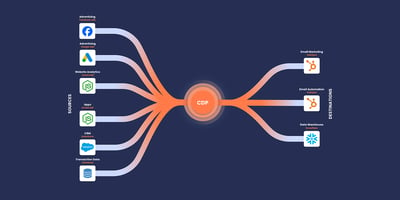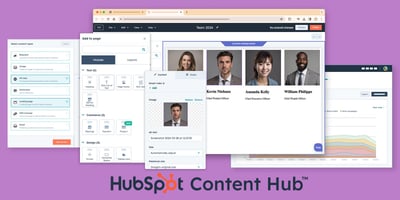What is B2B Marketing?
B2B (Business-to-business) marketing and sales refer to any marketing and sales activity geared towards a business rather than an individual.
If your business is selling a product or service to another business [and not directly to a consumer, B2C], you require B2B marketing and sales strategies.
Difference between B2B and B2C email campaigns
Unlike B2C prospects who respond best to emotions and entertainment, B2B prospects look for logic, solutions, and ROI.
They are generally assessing whether your business will help them grow. Therefore, your communications with this audience need to resonate with their business goals - which are almost always around growth.
B2B Email Marketing best practices
Selecting your email management platform
You will need to start by choosing the right platform for sending your marketing emails. If you are using a CRM like HubSpot, this is fairly simple as the platform has one already built-in. Should you not have a CRM you will need to either set one up or use a stand-alone mailing system.
There are a few factors to consider when selecting the right system for your business. Each platform has its own pricing plans that cater to the number of contacts in your database, emails you wish to send per month, and features you wish to add on. You can see how HubSpot breaks this down here.
Subject lines
The subject line of your mail is all your audience has to go off what will be in your mail and whether they should open it or not. There is a bit more to it than just any old title or phrase.
Is your title engaging and will it stand out from all the other mails flooding your audience’s inbox? Does it address the issue your mail is highlighting and hint at what’s inside? If and when they open your mail, did the subject line match the content within your mail?
You want your audience to get what they expected and not feel tricked into opening your email.
Always be testing. Try out different subject lines in your emails, you will find out which type of messaging resonates with your audience and improve your open rates.
Segmenting your audience
If you only take one thing away from this article, let it be this: Your audience is made up of individuals, each with their own interests, drives, and journeys. Sending emails to your entire database and hoping it resonates with them all is never going to happen.
Build out separate lists of contacts based on their personas, interests, and lifecycle stage. Through this, you can create hyper-personalized emails that resonate with that select group’s interests and help solve their unique problems. You will immediately see your open, engagement, and response rates go up.
Call to action
Do you know why you are sending out an email? Meeting a weekly/monthly sending quota is not a good enough reason. Your emails should work towards achieving a specific goal of your business and that of your contact.
This is where segmenting your audience is really necessary. Your contact’s lifecycle stage and the problem you have identified will prompt your messaging and the action you wish them to take.
In general, it is best to stick to only one call to action like a button to download an ebook or a link to schedule a meeting with your sales team.
Design
Audiences are usually quite forgiving about the design and layout of your emails, given that the content is relevant and engaging. This, however, does not mean it can be ignored.
Most email systems like HubSpot come with standard design templates that require no coding to set up. Generally, a clean and well-spaced email that is easy to read and navigate is all you need.
Tip: Focus on your content first. Design comes second. That being said, your email layout does need to be easy to read. So consider the list below.
Things to consider for optimal design.
- Is your email responsive, in other words, does the design adjust depending on the device it is viewed on?
- Is the email meant to look like a newsletter or a personal email?
- Are the images sized correctly, relevant, and of good quality?
- On a technical level, your email should look good on both light and dark modes across devices.
Automation
Depending on which platform you end up using, you could have access to automation tools for your emails. Automation will help you send out your nurture campaigns, sales follow-ups, and asset emails automatically at the right time when your recipient is more likely to open or based on their engagement with you and your website.
Automation is not something to fear but rather an asset that will greatly improve efficiency, customer experience and save your team's time.
In conclusion
Implementing these trends and best practices in your email marketing will significantly impact your return on effort and investment. Where you look further than just simple personalisation and implement deep list segmentation; punchy subject lines; slick design and automation that saves you time and reaches your audience at the right time.
Just like you can use in your emails, here is a call to action that you may just find helpful.





